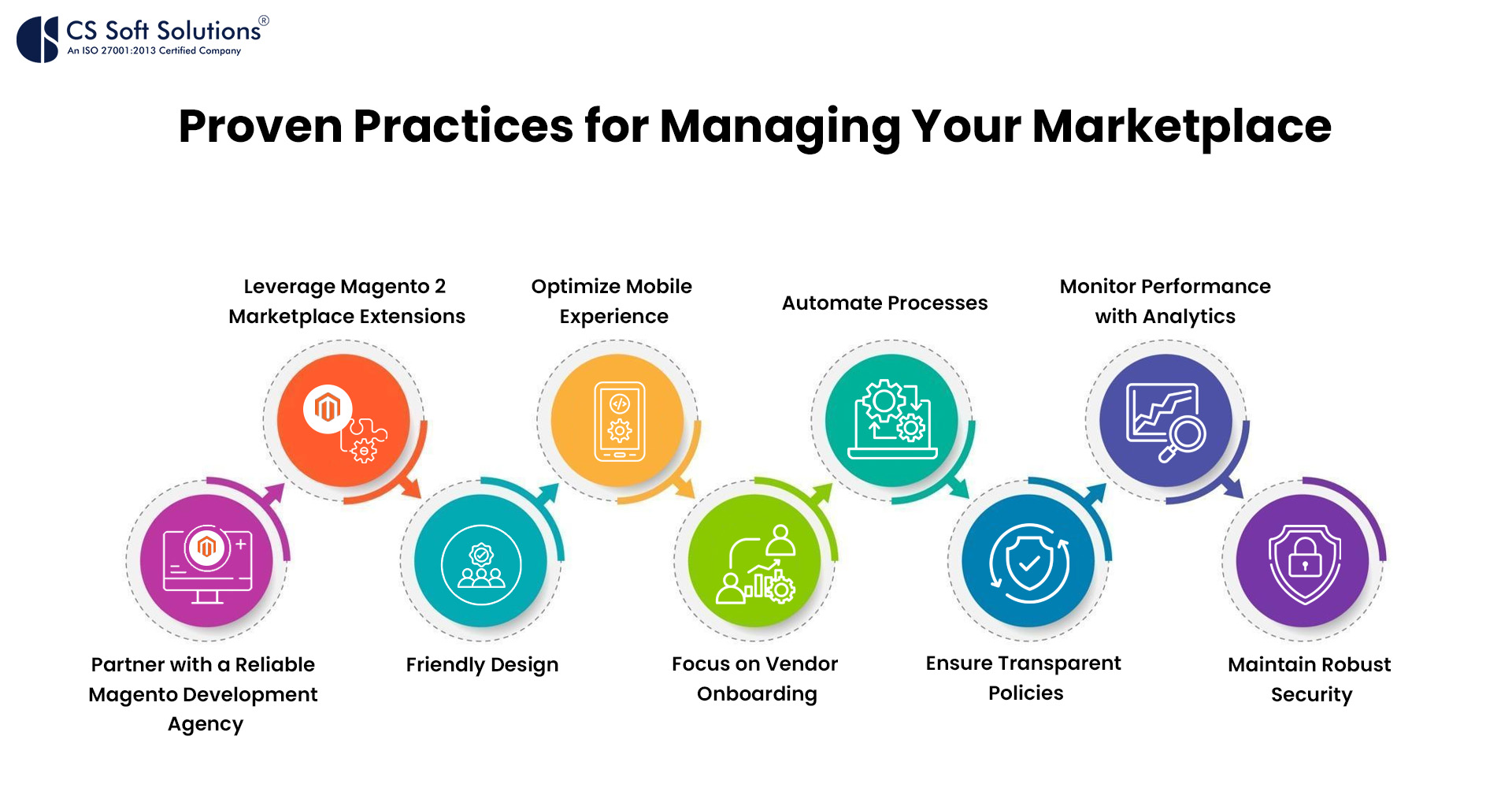
Here we will discuss in this blog the different ways to effectively handle your Magento marketplace and maximize its potential.
Why use Magento for multi-vendor marketplaces?
Amongst the most flexible and potent e-commerce platforms that may offer a strong foundation upon which successful multi-vendor marketplaces might thrive, Magento stands out from the rest. There are loads of reasons to opt for Magento when it comes to the multi-vendor ecommerce market. For most companies shifting toward becoming a multi-vendor marketplace, Magento Development Agency has become the go-to decision. Magento 2 marketplace extensions and features that could aid in the development of this marketplace more than the old versions.
Benefits of Magento 2:
- Customizability: Tailor your marketplace to meet specific business needs.
- Scalability: Handle increased traffic and vendors as your business grows.
- Extensive Extensions: Enhance functionality with the Magento 2 marketplace extension and other add-ons.
- Mobile-Friendly: The seamless integration with the Magento 2 multi-vendor mobile app enhances the user experience for mobile shoppers.
Important Features of the Magento 2 Multi-Vendor Marketplace
Before we go into administration, let’s look at the essential characteristics of a Magento 2 multi-vendor platform:
- Vendor Management: Allows sellers to manage their products, orders, and shipping independently.
- Admin Dashboard: It helps manage and control the activities of multiple vendors efficiently.
- Product Management: It reduces the complexity of adding various products by different vendors into your store.
- Commission Management: In this module, it becomes easier for the vendors to easily manage their commissions.
- Mobile App Integration: The Magento 2 multi-vendor mobile application enables your consumers to shop while on the move, improving your marketplace’s access and reach.
Proven Practices for Managing Your Marketplace
The success of your Magento 2 Multi-Vendor Marketplace is dependent on proper administration:
1. Partner with a Reliable Magento Development Agency
Working with an experienced Magento development agency ensures your platform is built and maintained with the best-in-class solutions. It helps implement the right extensions, optimize performance, and resolve technical issues promptly.
2. Leverage Magento 2 Marketplace Extensions
Leverage high-end tools like the Magento 2 marketplace extension to improve the functionality of your platform. Such extensions include advanced reporting, seller dashboards, and checkout processes that are streamlined, which improve the user experience.
3. Friendly Design
A clean and intuitive interface attracts more customers and vendors. Ensure that your platform is:
- Responsive: It should work smoothly across devices.
- Easy to Navigate: It should offer simple menus and categories.
- Visually Appealing: Incorporates high-quality images and a professional layout.
4. Optimize Mobile Experience
Mobile commerce is on the rise, and so is the integration of a Magento 2 multi-vendor mobile app. This is to ensure that your platform is easily accessible to vendors and customers, thereby increasing engagement and sales.
5. Focus on Vendor Onboarding
Streamline the vendor registration process to encourage sellers to join your platform. Provide training materials and clear guidelines on product uploads, pricing, and order management to help vendors get started.
6. Automate Processes
Automation saves time and minimizes errors. Use Magento’s built-in tools and extensions to:
- Automated order processing.
- Send notifications to vendors and customers.
- Manage inventory in real time.
7. Ensure Transparent Policies
Set clear policies regarding commissions, returns, and vendor performance. Transparency builds trust among sellers and encourages long-term partnerships.
8. Monitor Performance with Analytics
Track metrics such as:
- Sales trends.
- Vendor performance.
- Customer engagement.
Use this data to make informed decisions and optimize your marketplace.
9. Maintain Robust Security
Protect customer and vendor data with advanced security measures, including:
- SSL certificates.
- Two-factor authentication.
- Regular software updates.
- Drive Growth with a Marketing Strategy
Driving Growth with Marketing Strategies
To make sure that your marketplace flourishes, supplement your management practices with efficient marketing:
- Social Media Marketing: Promote your platform on the likes of Instagram, Facebook, and LinkedIn.
- Email Marketing: Run targeted campaigns for your vendors and customers.
- SEO Optimization: Use keywords like “Magento Development Agency” and “Magento 2 Multi-Vendor Marketplace” to gain rankings.
- Discounts and Promotions: Bring in customers and increase sales for vendors with special offers.
Final Thought
Running a Magento 2 Multi Vendor Marketplace is a complex practice, but the right strategies, tools, and support from a trusted Magento Development Agency like CS Soft Solutions India Pvt. Ltd are within your reach. Using the strong features of Magento, mobile app integration, and best practices can all be used to create a thriving, customer-centric platform that benefits both vendors and shoppers alike. Begin these tips today and watch your marketplace flourish!












